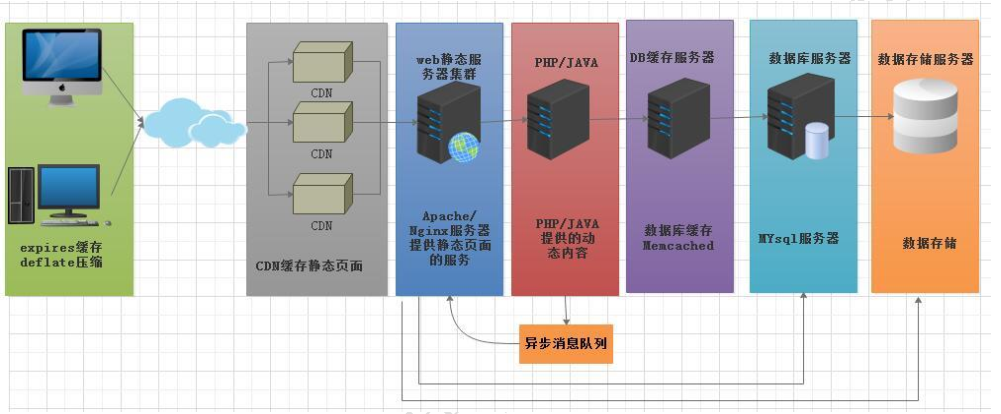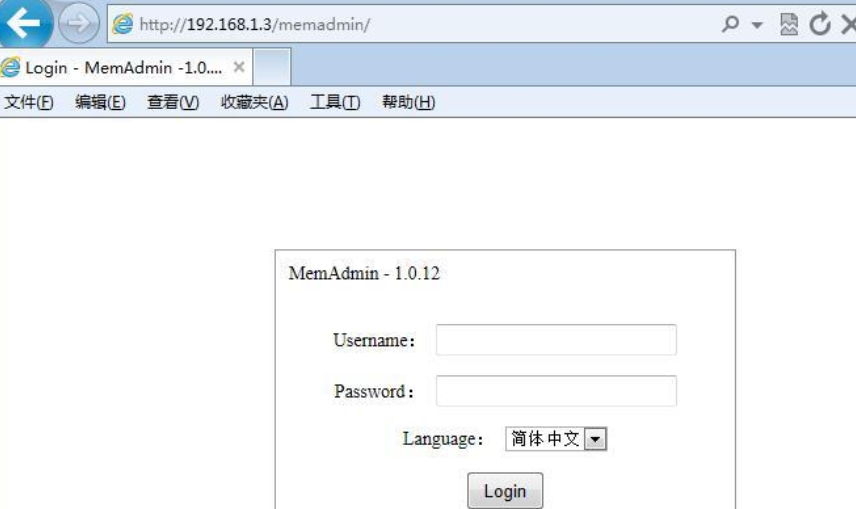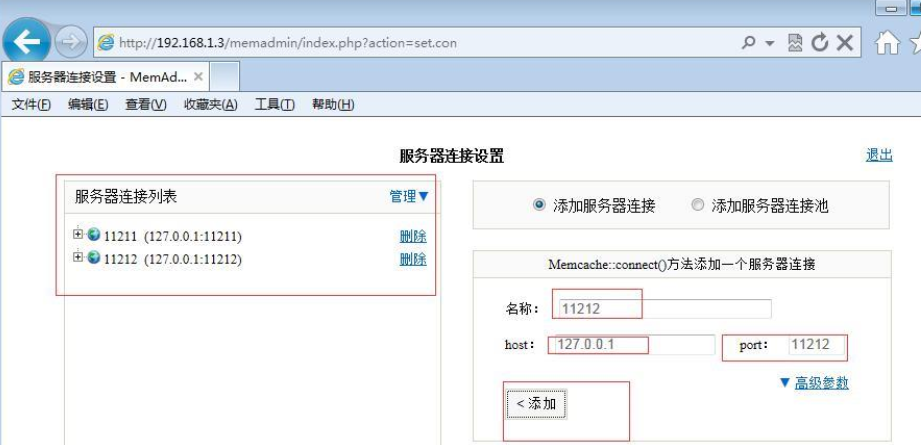介紹 它是一套數據緩存系統或軟體 用於動態應用系統中緩存資料庫的數據,減少資料庫的訪問壓力,達到提升性能的效果,實際應用環境中多用於資料庫的cache的應用。它是通過預分配指定的記憶體空間來存儲數據 定義 它是一個開源的、高性能的,具有分散式記憶體對象的緩存系統,它一般用來存儲經常讀取的對象或數據,如同 ...
介紹
它是一套數據緩存系統或軟體
用於動態應用系統中緩存資料庫的數據,減少資料庫的訪問壓力,達到提升性能的效果,實際應用環境中多用於資料庫的cache的應用。它是通過預分配指定的記憶體空間來存儲數據
定義
它是一個開源的、高性能的,具有分散式記憶體對象的緩存系統,它一般用來存儲經常讀取的對象或數據,如同web伺服器會將一些內容緩存到客戶端本地一樣
mysql已經有cache了,為啥還要在它前面加一層memcached?
memcached是一個key/value系統,系統相對於MySQL簡單很多,雖然MySQL也有cache,但是資料庫的SQL解析會耗費性能,查詢慢於memcached,另外MySQL的cache設計得更加複雜,因為要考慮事務,日誌,存儲引擎等模塊,它的性能也沒有memcached好
memcached只做一件事情,簡單高效,在cache上比MySQL強,這應該容易理解memcached的應用場景
資料庫的前端緩存應用:讓它來分擔數據的併發壓力,當數據更新時,可以使程式通知緩存進行更新
session會話共用的共用存儲
memcached應用中的工作流程
它是一種記憶體緩存,可通過API的方式讀取記憶體中緩存的這些數據,當用戶需要讀取數據時,會首先訪問memcached記憶體緩存,如果緩存中有數據就直接返回給前端的應用程式,如果沒有,再轉發給後臺端的伺服器,這時伺服器除了返回數據給用戶,還會將數據更新給memcached緩存。
如果實際生產環境中,緩存伺服器需要重啟(或者斷電),那麼緩存中的數據將會丟失,那麼這時後端的伺服器 併發壓力會增大,可能會導致後端的伺服器也跟著宕機,無法提供服務, 那麼這時我們的處理流程是這樣的: 首先從負載均衡中將 WEB 應用停掉----->讓負載均衡不再轉發數據給 WEB---->接著啟動緩存伺服器--------> 通過程式把資料庫的內容初始化到緩存伺服器中------->然後將 web 應用啟用------->重啟資料庫伺服器

1、設置緩存(expires)和 deflate 壓縮,可以將一些內容直接緩存在用戶端的本地,下次訪問直接調用本地 2、 CDN 緩存靜態內容(html、圖片等),當用戶請求這些內容時直接調用 CDN 的內容,不再請求後端伺服器了 3、 Apache 和 Nginx 靜態伺服器提供靜態內容(通過非同步消息隊列生成靜態內容) 4、 PHP 和 JAVA 動態內容 5、資料庫的 memcached 緩存伺服器 6、資料庫伺服器(MYSQL) 7、資料庫的存儲伺服器
特性
協議簡單:協議使用比較簡單,使用基於文本行的協議
基於libevent的事件處理
memcached軟體的工作原理
它是一套C/S模式架構的軟體,在伺服器端啟動服務守護進程,可以為memcached伺服器指定監聽的IP地址、埠號、併發訪問連接數以及分配多少記憶體來處理客戶的請求參數
需要被緩存的數據以key/value鍵值對的形式在伺服器端預分配的記憶體區中,每個被緩存的數據都有唯一的標識key
安裝與配置
[root@cairui ~]# cat /etc/redhat-release CentOS release 6.8 (Final) [root@cairui ~]# uname -r 2.6.32-696.6.3.el6.x86_64
libevent安裝
[root@cairui software]# tar xf libevent-2.1.8-stable.tar.gz [root@cairui software]# cd libevent-2.1.8-stable [root@cairui libevent-2.1.8-stable]# ./configure [root@cairui libevent-2.1.8-stable]# make [root@cairui libevent-2.1.8-stable]# make install
安裝memcached
[root@cairui libevent-2.1.8-stable]# yum install memcached [root@cairui libevent-2.1.8-stable]# find / -name memcached /etc/sysconfig/memcached /etc/rc.d/init.d/memcached /usr/bin/memcached /var/run/memcached
配置ld.so.conf路徑防止啟動時報錯
[root@cairui lib]# echo "/usr/local/lib">>/etc/ld.so.conf [root@cairui lib]# ldconfig [root@cairui lib]# which memcached /usr/bin/memcached
memcached參數介紹
[root@cairui lib]# /usr/bin/memcached -h
memcached 1.4.4
-p <num> TCP port number to listen on (default: 11211) #指定監聽埠
-U <num> UDP port number to listen on (default: 11211, 0 is off)
-s <file> UNIX socket path to listen on (disables network support)
-a <mask> access mask for UNIX socket, in octal (default: 0700)
-l <ip_addr> interface to listen on (default: INADDR_ANY, all addresses) #指定監聽地址
-d run as a daemon #後臺模式啟動
-r maximize core file limit #最大的文件字元集
-u <username> assume identity of <username> (only when run as root) #指定用戶
-m <num> max memory to use for items in megabytes (default: 64 MB) #分配記憶體區大小
-M return error on memory exhausted (rather than removing items)
-c <num> max simultaneous connections (default: 1024) #最大併發數
-k lock down all paged memory. Note that there is a
limit on how much memory you may lock. Trying to
allocate more than that would fail, so be sure you
set the limit correctly for the user you started
the daemon with (not for -u <username> user;
under sh this is done with 'ulimit -S -l NUM_KB').
-v verbose (print errors/warnings while in event loop)
-vv very verbose (also print client commands/reponses) #以very verbose模式啟動
-vvv extremely verbose (also print internal state transitions)
-h print this help and exit
-i print memcached and libevent license
-P <file> save PID in <file>, only used with -d option #設置保存memcached的PID
-f <factor> chunk size growth factor (default: 1.25)
-n <bytes> minimum space allocated for key+value+flags (default: 48)
-L Try to use large memory pages (if available). Increasing
the memory page size could reduce the number of TLB misses
and improve the performance. In order to get large pages
from the OS, memcached will allocate the total item-cache
in one large chunk.
-D <char> Use <char> as the delimiter between key prefixes and IDs.
This is used for per-prefix stats reporting. The default is
":" (colon). If this option is specified, stats collection
is turned on automatically; if not, then it may be turned on
by sending the "stats detail on" command to the server.
-t <num> number of threads to use (default: 4)
-R Maximum number of requests per event, limits the number of
requests process for a given connection to prevent
starvation (default: 20)
-C Disable use of CAS
-b Set the backlog queue limit (default: 1024)
-B Binding protocol - one of ascii, binary, or auto (default)
-I Override the size of each slab page. Adjusts max item size
(default: 1mb, min: 1k, max: 128m)
配置memcached
[root@cairui lib]# memcached -p 11111 -u root -c 1024 -d [root@cairui lib]# lsof -i:11111 COMMAND PID USER FD TYPE DEVICE SIZE/OFF NODE NAME memcached 17416 root 26u IPv4 90768 0t0 TCP *:vce (LISTEN) memcached 17416 root 27u IPv4 90785 0t0 UDP *:vce [root@cairui lib]# netstat -lntup|grep mem tcp 0 0 0.0.0.0:11111 0.0.0.0:* LISTEN 17416/memcached udp 0 0 0.0.0.0:11111 0.0.0.0:* 17416/memcached
寫入數據
[root@cairui ~]# printf "set key001 0 0 10\r\ntest123456\r\n"|nc 127.0.0.1 11111 #寫入數據 STORED [root@cairui ~]# printf "get key001\r\n"|nc 127.0.0.1 11111 #查詢數據 VALUE key001 0 10 test123456 END [root@cairui ~]# printf "delete key001\r\n"|nc 127.0.0.1 11111 #刪除數據 DELETED [root@cairui ~]# printf "get key001\r\n"|nc 127.0.0.1 11111 END
正確關閉 memcached 服務 一般啟動時最好指定下 PID [root@LVS-2 ~]# memcached -p 11213 -u root -m 16m -c 1024 -d -P /var/run/11213.pid #指定進程文件 [root@LVS-2 ~]# kill `cat /var/run/11213.pid` 提示:實際生產環境中,要佈署 memcached 服務,做為數據緩存,記憶體的指定大小是根據業務來確定,是不是需要負載均衡?最好同開發一起討論確定好,還有它還有分客戶端與服務端 配置 session 會話共用存儲 vi /applicaton/php/lib/php.ini session.save_path = "/tmp"改成 memcached 伺服器地址 tcp ://10.10.10.1:11211 session.save_handler = files(改成 memcached) 將所有的 WEB 伺服器(WEB 伺服器需要安裝客戶端)里的 PHP 配置文件改成上述配置,即可完成會話共用存儲
memcached監控軟體介紹
[root@LB01 vhost]# cd /web/www/ [root@LB01 www]# wget http://www.junopen.com/memadmin/memadmin-1.0.12.tar.gz [root@LB01 www]# tar zxf memadmin-1.0.12.tar.gz 無需安裝,解壓即可





